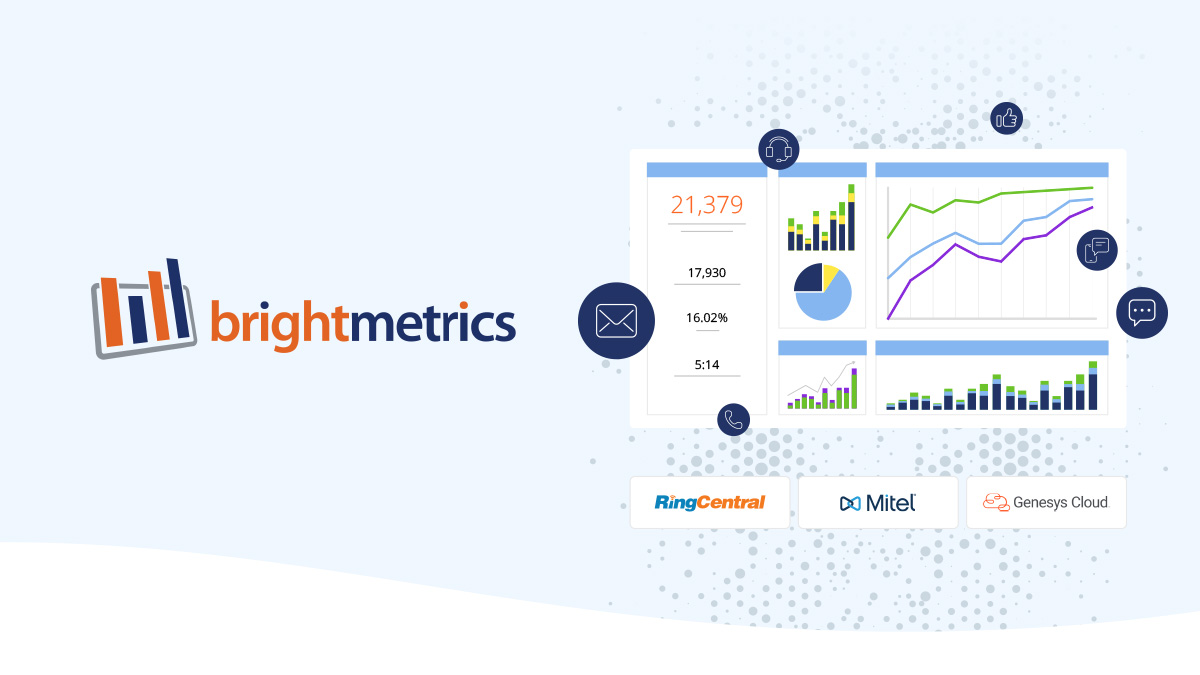In the bustling realm of call centers, data collection and analysis act as guiding beacons, illuminating pathways to enhance performance and continuous growth. Yet, the journey from raw data to meaningful insights is only half the battle. Call center and contact center analysts often need effective ways to communicate insights to executives, managers, and employees.
But here’s the twist: bridging the gap between insights and impact demands more than data wizardry. It requires a language that resonates across all levels of the organization, a language that turns numbers into narratives and graphs into actionable insights.
Discover how these KPI reporting tips can seamlessly illuminate the advantages that data analysis offers to all corners of your organization, especially by converting data into decisive actions. Ensure that each team member not only grasps but also advocates for the remarkable benefits analysts’ efforts yield.
Demand Attention From the Start
Engage executives and management teams by leading with attention-grabbing metrics in your KPI reporting. The initial call center metrics you choose to highlight will vary based on the specific goals of your project. For instance, if your call center’s executives aim to enhance customer assistance without expanding their workforce, consider beginning with Average Handle Time (AHT). This figure, portraying the average duration to manage a call, immediately piques their interest. Once you have their attention, you can then delve into the more detailed granular data, providing meaningful insights.
Given the busy schedules and limited time of executive teams, it’s helpful to captivate them with intriguing KPIs before delving into the technical details of your report. By adopting this approach, you effectively steer their focus towards trends, anomalies, and noteworthy performance accomplishments – pivotal elements that hold the potential to steer the business towards greater success.
Select the Right Visualization for Your Data
You have seemingly unlimited ways to present data visually. Some popular options include:
- Bar charts
- Line or Time Series charts
- Pie charts
- Text
But you can go beyond simply visualizing data by choosing a format that highlights the importance of your analysis.
Looking closer at your visualization options, you see different ones offer specific benefits. Consider the following call center KPI visualizations that best communicate your findings:
- Utilize bar charts to emphasize the differences between KPIs, such as last year’s Average Speed of Answer (ASA) versus this year’s ASA.
- Use line or time series charts to show how KPIs have evolved.
- Create pie charts to emphasize the importance of one KPI compared to others.
- Highlight agent stats for the last week in a listicle or text format.
When necessary, you can use a combination of charts, graphs, and text to visualize your data. If unsure, make several data visualizations and show them to your colleagues for feedback. The option that works best for them will probably appeal to others too.

Don’t Just Rely On Historical Data
For presenting data, your approach might differ when targeting executives versus communicating with call center managers or even agents. While executives often rely on historical data spanning months or quarters, this approach might not yield the same impact when dealing with the managers and agents who are on the floor. Instead, the key lies in utilizing real-time data that showcases individual performance compared to customer experience goals and fellow agents.
The potential of real-time analytics goes beyond simply motivating call center agents. It extends to assisting managers in adapting to fluctuations in call volume. For instance, the predictable surge in call volume during holidays is a well-known scenario. Yet, equally important is the ability to monitor sporadic changes in call volume throughout the year.
Embrace Simple Terminology
Understanding the significance of data analytics can be challenging for some, even when presented in simple terms. After all, not everyone possesses the expertise of a data analyst. Given this, it’s prudent to expect questions and prepare concise responses. Start by cultivating a deep comprehension of your data – answering questions requires a firm grasp of what your data and analyses signify within the context of call center operations and objectives.
Scrutinize reports and presentations through the lens of a non-specialist. If you encounter technical elements, invest time in breaking them down into more accessible language. Your goal is to enter each meeting equipped to discuss intricate data using straightforward terminology that resonates with everyone.
However, it’s often challenging to detach yourself from your work. Concepts that appear clear to you might be hard to interpret to others. Overcoming this hurdle involves seeking feedback from colleagues without analytics backgrounds. Request their input on sections and areas that are confusing or require further clarification.
Gaining a fresh perspective should facilitate the discovery of uncomplicated ways to address questions. You can even gauge whether your colleagues find that your explanations improve the accessibility of the data. Positive feedback would signal the viability of your approach.
Simplify Your Call Center’s KPI Reporting
In the realm of call centers, data serves as a guiding beacon, illuminating the path to enhanced performance and continuous growth. Yet, the true magic occurs when raw data transforms into tangible insights. It’s not merely about crunching numbers; it’s about conveying a language that resonates across the team, shaping graphs into narratives we can act upon.
Unified communications and contact center analytics services, such as Brightmetrics, pave the way for effortless data visualization and KPI reporting. With Brightmetrics, call center analysts can effortlessly generate tailored reports and dashboards for specific teams. Sharing your call center data and insights has never been smoother.
Illuminate the bigger picture of customer interactions and agent activities through highlighted KPIs. Showcase operational enhancements and pinpoint training and coaching opportunities. Brightmetrics streamlines data analysis, enabling call center analysts to focus on more complex and time-sensitive tasks.
Discover the potential of Brightmetrics for your team today and unlock the transformational capabilities it offers!




